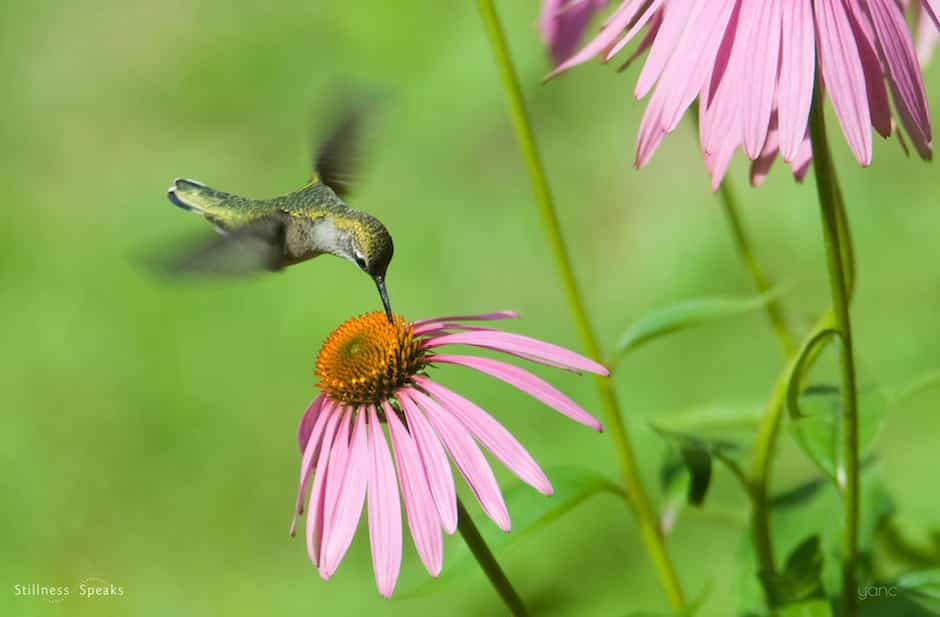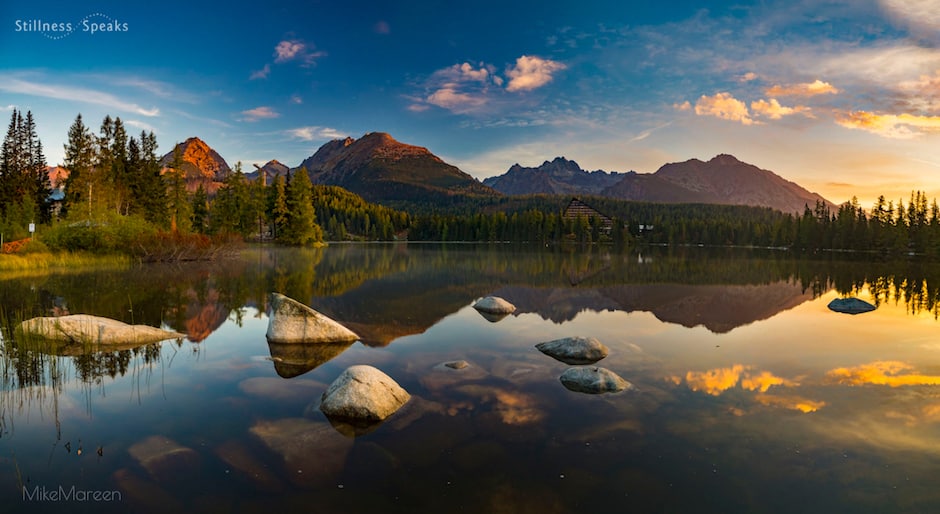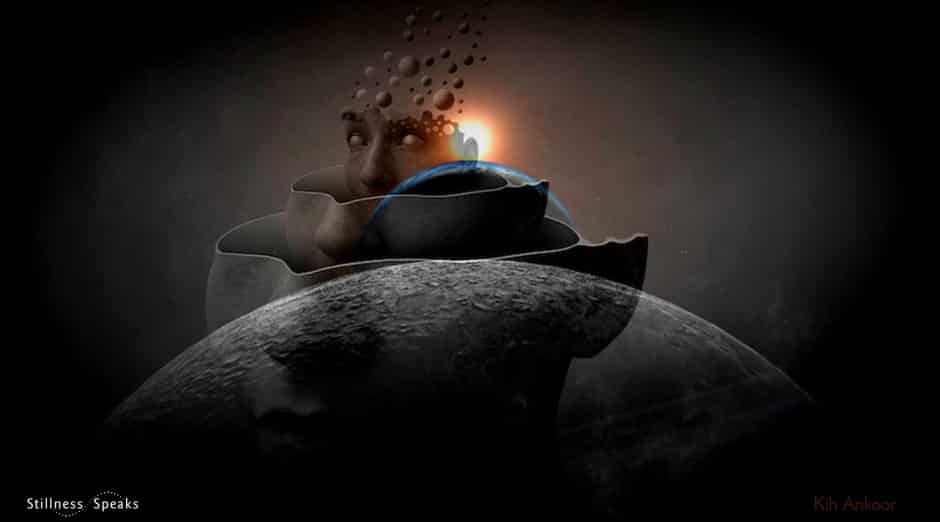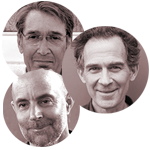True meditation “… simply means being present to what is: … the spaciousness in which everything is arising, the listening stillness, the aliveness and vibrant present-ness of everything …” ~ Joan Tollifson
Meditation has become a mainstream word, idea, and pursuit in the western world … especially in recent years.
If undertaken and persevered earnestly, meditation yields many benefits that are self evident to the “practitioner” but can also be found documented externally (although the direct experience is what truly matters). The advantage of becoming mainstream is that lots of research is now published about its benefits and it is being used in many segments of society: business, education, entertainment, sports, prisons, and more. Meditation information is more than readily available and trainings are becoming more and more commonplace …
Of course, another key impetus for its popularity is due to Zen … which, as we know, is all about meditation … and interest in Zen, as a tradition, plus actual practice had been increasing (gradually since about the 60s but more rapidly in the last two decades) well before the term meditation took hold.
There are many types of meditations: transcendental, vipassana, loving kindness, mindfulness, just to name a few … and each meditation has different techniques – what to do and when and how long and how often etc etc…
With all the varieties and the copious information (even apps are available!), one can easily get lost navigating the “meditation landscape” – trying to find, and make sense of, what it means … and ultimately asking the important question: is it for me? …
So, we want to step back from the existing “meditation landscape” and dig a bit deeper and explore the essence primarily through the lens of Joan Tollifson – a relatively frequent guest author on Stillness Speaks.
Reflecting on Joan’s articulate perspective on true meditation, was reminded of Gangaji’s words on True Meditation – which is a good “framing” for this post:
“The purpose of meditation is to quiet the mind. In the quiet mind, conditioned responses are exposed and obliterated. Meditation allows the mind to release its fixation on objects and to rest in its source.
The quiet mind reveals that which is always silent, that which both activity and inactivity spring from and return to, that which the experience of ignorance and the experience of enlightenment spring from and return to.
That is your own self.
Often what gets called meditation is concentration practice. Like therapy, breath work, or yoga, concentration can be helpful. It has its place. Discover what is beyond concentration. Discover what is no object of concentration but is silent awareness itself.”
In this post, Joan Tollifson explores the title-question in depth and as is typical of her teachings, offers clear and very relatable answers. She unpacks the term by first defining it, then qualifying it further, counsels as to how to best approach it, goes into some of the challenges involved especially one that invariably brings a chuckle: the issue of does one have time to meditate 🙂 … then looks at the meditation experience in its “infancy.” and finally, she shares the real enduring gift of true meditation then closes with the essence of True Meditation again so one can walk away with it.
Anyone seriously interested in meditation will benefit immensely from this post.
All text below is from Joan (see credit at bottom of post) – except for Gangaji’s quotes (here and before the subsection “How to Best Approach Meditation”). All subsections are our additions.
“Meditation is a dualistic practice that only reinforces the separate self,” or “I don’t have time to meditate,” or “I can’t meditate, my mind is too busy.” I hear statements like these rather frequently, and I wonder, are any of these statements true?
What Exactly is True Meditation?
First of all, what is meditation? The word is used to refer to many very different things, but in the deepest sense, as I use it, it simply points to being Here-Now, being just this moment, exactly as it is.
Here-Now, this awaring presence, is the ever-present common factor in every different experience, whether we are meditating, busy at work, taking care of loud and unruly children, shopping for groceries in a crowded market, driving on a busy freeway, having a heated conversation, or sitting quietly on a park bench watching the birds. Whether we are feeling calm or agitated, blissful or miserable, it all happens Here-Now. Meditation is actually the natural activity of awareness.
In the more formal sense of the word, meditation refers to putting aside our usual activities, remaining relatively still and quiet, and then doing (or not doing) various things. These various things in different schools of meditation may include following the breath, attending to sensations, labeling thoughts, saying a mantra, working on a koan, being aware of awareness, or not doing anything at all. There may be additional instructions given on correct posture, hand positions, keeping the eyes open or closed, and so on—and these will differ from one school of meditation to the next.
For me, meditation simply means being present to what is: just this! In other words, simply being awake to the sounds of traffic, the sensations in the body, the breathing, the visual dance of shapes and colors if the eyes are open, the spaciousness in which everything is arising, the listening stillness, the aliveness and vibrant present-ness of everything.
Meditation also means being aware of the thoughts that pop up and recognizing them as thoughts, without mistaking them for objective and credible reports on reality, and without getting sucked into the content or the storylines they are spinning—and if getting sucked in and hypnotized by thought does happen, as it probably will at times, meditation simply means being aware of that—seeing the allure of thought and how quickly and persuasively it creates an imaginary world that seems believable, and how it creates the apparent “me” at the center of that story.
Can True Meditation be Results Oriented? Can it be Good or Bad?
Meditation is non-judgmental and not result-oriented. It isn’t going anywhere. And if judgments or seeking results should arise, as they may, meditation simply means noticing those movements of the mind without judging the judging or seeking the end of seeking. Nothing is resisted, nothing is sought. Everything is allowed to be as it is. Meditation as I mean it is not about getting into any special state or getting rid of anything that appears. It’s simply being present, being aware, being Here-Now, which we effortlessly always already are, but often we are focused on the content of our thoughts, our storylines and curative fantasies about getting somewhere else or figuring everything out.
There is no such thing as a “good meditation” or a “bad meditation.” You can’t fail at meditation, although many people believe they have failed because their thoughts are running wild and they feel agitated, restless or bored, so they must be a failure at this. People often have the idea that meditation is about being calm and thought-free, and if that’s not happening, it means it’s not working. But true meditation simply allows all of this to be as it is. Meditation is not about results, or getting somewhere, or having a special mystical experience, or fixing and improving the imaginary “me.” It’s simply about being awake Here-Now, allowing it all to be just as it is—and noticing that everything already IS allowed to be as it is—obviously, because it’s all here, just as it is, even our moments of resistance and seeking! It is the nature of awareness to allow everything to be as it is. Awareness includes everything and clings to nothing. We might call that unconditional love.
How to Best Approach True Meditation
“Discover what is beyond concentration. Discover what is no object of concentration but is silent awareness itself. I am not against meditation and practice. I am against the separation of a meditation practice from life. When the separation between practice and life is recognized as illusory, then your whole life is meditation. Life is silent awareness, and all the events of life appear and disappear in that silence. You are that silence.” ~ Gangaji
And ultimately, as any true meditation eventually reveals, there is no actual boundary between “meditation” and “the rest of my life.” But it is very helpful, especially in the beginning, to dedicate some actual, uninterrupted time and space to sitting quietly, doing nothing. This is something our society as a whole desperately needs, and something most of us are deeply hungry for, whether we recognize it or not. Far from “wasting time,” this is about discovering what is most essential and seeing the false for what it is. But it is best to approach meditation without any such lofty ideas, and to regard it as utterly useless and purposeless. That may sound dreadful, but only to the conditioned mind.
Although meditation is sometimes called sitting, being seated is not essential. You can meditate sitting, standing, lying down or walking. You can be in an armchair, a recliner, on a park bench or a meditation cushion. You can be at home, at the office, in prison, in a hospital bed, on an airplane or anywhere at all. A quiet location is helpful, but by no means essential. Nothing that shows up needs to be regarded as a distraction, an obstacle, an interruption or a problem. Your eyes can be open or closed. You don’t need to hold the body completely still, but simply allow a natural stillness to emerge by itself.
Do we have Time to Meditate?
Everyone has at least a few minutes during any ordinary busy day that they could potentially devote to this kind of simple being. While riding on a bus, train or plane, or while sitting in a waiting room before an appointment, instead of reaching for a magazine or your phone, just BE here. This is radical in our society! For a moment between clients, between patients, between meetings, while on breaks, while the children are napping, or whenever there is a free moment in your daily schedule, simply stop and be. A few minutes, even a few seconds, throughout the day can be huge.
And maybe it’s possible to take some dedicated time, maybe just 5 or 10 minutes, at the beginning and/or end of the day to simply be here, doing nothing. Although formal meditation does take time relatively speaking, it is actually about opening to the timeless Now, which is without beginning or end, ever-present and yet ever-changing.
No one is without some amount of unscheduled, free time. But we tend to fill it up with noise and busyness: constant thinking and talking, video games, social media, cruising the internet, watching TV, reading, checking email, looking at our phones, or pretty much anything other than just being here. Our present society offers abundant possibilities for this kind of restless and increasingly addictive activity. It’s hard to find any public space anymore without TVs playing or background music or both going constantly. While none of these aforementioned activities are “bad” or inherently problematic in moderation, it’s a wonderful revelation to live without them for a few minutes, a few hours, a few days or weeks at a time.
“Dipping Toes” into Meditation
When you first allow yourself to do this—to stop and be still, doing nothing at all—you may feel relief and joy, or you may feel an intense energy in the body that seems to demand that you do something like get on your phone or start thinking about something right away. If you do feel this powerful urge to do something, just feel this energy, this urgency, in the body as pure sensation. Explore it. Let it be. If there is what we call restlessness or boredom, just allow these things to be as they are and be curious about them—what are they, without the labels? See the thoughts, feel the sensations, tune into the bare energy of them. Letting go of all our busyness and hyper-stimulation can be like going through withdrawal from any other kind of addiction—there is often a period of discomfort. The challenge is to be with this discomfort without reaching for something to cure it. This is where you discover what you have been avoiding and what you have been missing.
Some people feel discipline and regularity is very important in meditation, others do not. Some regard meditation as a practice, others as simply a natural part of life. Some use a timer and follow a strict schedule, others simply meditate as often or as long as it invites them, perhaps without even thinking of it anymore as “meditation” or as anything special. I feel we can all trust that the best way for each of us will unfold naturally, and the best way may change over time. Even the apparent mistakes are all part of the Way. The Way is going nowhere; it’s always Now/Here. If we are trying to “be here now,” we are presuming a false separation. We are Here-Now. Always! Meditation is never about the future or trying to get somewhere.
The Real & Enduring Gift of True Meditation
Meditation involves seeing how the thinking mind creates suffering and confusion, waking up from stories and beliefs, developing a capacity to be with disturbing sensations or emotions without needing to escape in harmful ways, and shifting from a life primarily rooted in and run by thinking to a life rooted more and more in awareness and presence. On a practical level only, this can all bring us a much happier and less stressful life, and for many, especially with secular forms of meditation, this is as far as it goes, and that’s fine.
But at a deeper level, meditation involves seeing through the mirage of the separate self. Meditation reveals the seamlessness, wholeness and interdependence of everything. In true meditation, there is no meditator. There is no boundary between inside and outside, between subject and object.
Meditation is how we realize or actualize what might otherwise just be a collection of beautiful ideas or beliefs (e.g., that there is no self, that apparently separate and persisting things don’t actually exist, that birth and death are imaginary divisions in what is actually a seamless whole, that our True Nature is never lost even in moment of upset and confusion). Meditation allows us to explore questions such as free will or the nature of reality not by thinking about them, but by observing and knowing directly. Meditation is not theoretical or philosophical; it is nonconceptual and embodied. And paradoxically, when we are fully embodied, it is clear that we are no body at all!
That doesn’t mean picking up some idea that “I am not my body.” You are the body! But the body is not what you think it is. The living, breathing actuality is permeable, fluid, moving, inseparable from what is supposedly not the body. Your true body is the whole universe. Meditation is a fully-embodied activity of the whole body.
Who or what are you right now if you don’t refer to thought, memory, second-hand information or imagination? Do you as this undeniable awaring presence Here-Now have a gender, an age, a nationality? Do you have any boundaries, any place where you begin and end, any place where you are not? Is there any boundary between inside of you and outside of you? Feel into these questions. Feel the relief and freedom of being no-thing at all and everything.
An Important Suggestion
For a moment, leave past and future behind. Leave behind all ideas and beliefs, all second-hand information and accumulated knowledge. Leave behind everything you think you know about yourself and the world. Leave behind all expectation and anticipation, all opinions and judgments. Simply be. Feel the spaciousness, the openness, the energy, the vibrant aliveness.
Go deeply with awareness into any sensation (somatic, auditory, visual, tactile, olfactory, gustatory, kinesthetic), and you will discover nothing solid. Everything opens to vastness.
The Essence of True Meditation
Meditation is devotion to what is. Meditation is a moment-to-moment exploration and discovery with no finish-line, no end result, no final conclusion, because there really isn’t one. The living reality is moving, changing, always fresh and new, and yet always Here-Now.
Meditation invites being liberated on the spot, not once-and-for-all, not someday, not once long ago, but right now.
And if you think you’re not liberated, meditation invites you to see if you can find the one who is not liberated!
~ Joan Tollifson
“Meditation practice can be very useful for calming the mind and thereby experiencing relatively more peace. In time, however, the meditation practice usually becomes an obstacle, because then there are images of both “meditation” and “my life,” as well as images of a “meditator” doing “a meditation.” These images are mental traps.
… …
In quieting the mind, there is the recognition of endlessness. There is, for an instant, the recognition of what has always been. Endlessness does not come into being, or suddenly become endless. It is. It always is, whether you have an active mind or an inactive mind. The purpose of deactivating the mind is to realize that.” ~ Gangaji
We are honored to publish this guest post authored by (& copyright of) Joan Tollifson with her permission. The text content of this post was previously published on Joan’s website, titled: TRUE MEDITATION: What Is It?
All the images, the subsections, Gangaji’s quotes, and the contextual preambles are our additions.
Gangaji quotes from: You Are That,Volume I, Satsang with Gangaji













Thank you very much for this excellent post. It can be that simple and real. Early in the morning, just sitting outside watching the trees, the birds on the trees and sometimes a squirrel. Their joy of being and aliveness.The vast expanse of the sky, the white furrow of a jet in the deep blue sky and its reverberating sound. All the senses wide awake. Thoughts have no share in this.
Indeed!
Thanks for dropping by Thierry.
Have a great weekend!
Sanjiv